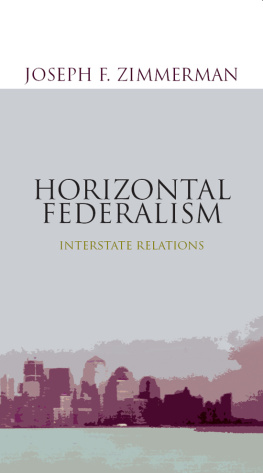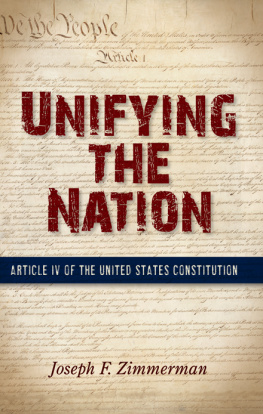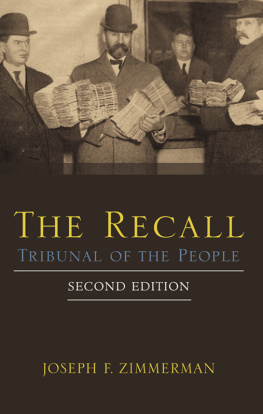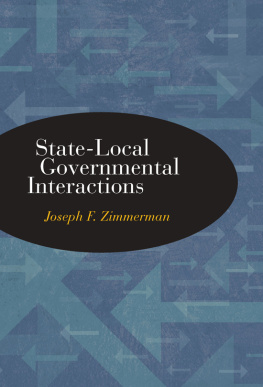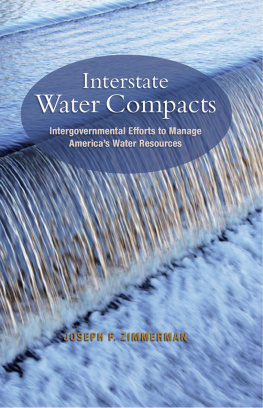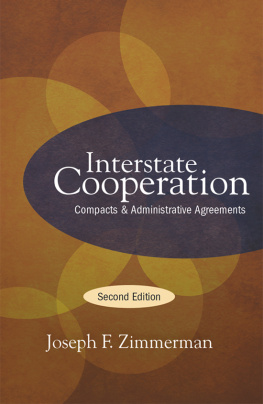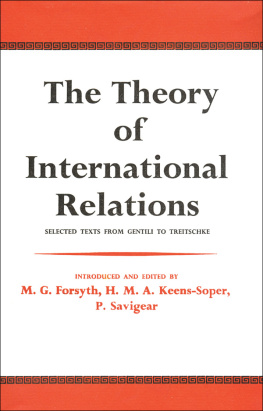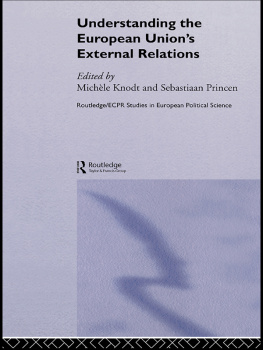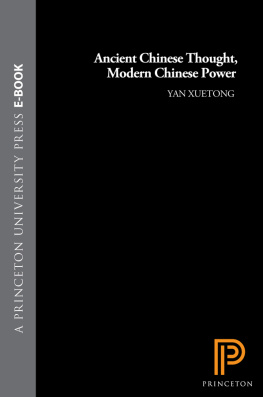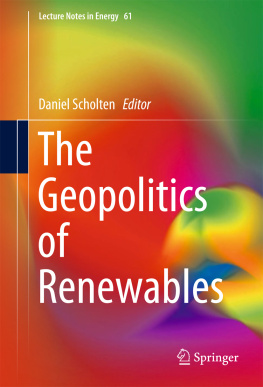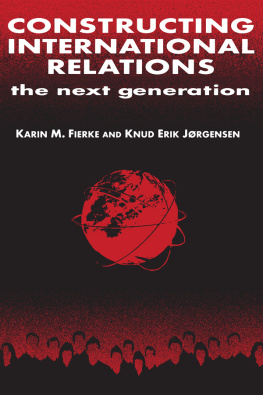HORIZONTAL FEDERALISM
Interstate Relations
JOSEPH F. ZIMMERMAN
STATE UNIVERSITY OF NEW YORK PRESS
Published by
STATE UNIVERSITY OF NEW YORK PRESS, ALBANY
2011 State University of New York
All rights reserved
Printed in the United States of America
No part of this book may be used or reproduced in any manner whatsoever without written permission. No part of this book may be stored in a retrieval system or transmitted in any form or by any means including electronic, electrostatic, magnetic tape, mechanical, photocopying, recording, or otherwise without the prior permission in writing of the publisher.
For information, contact
State University of New York Press, Albany, NY
www.sunypress.edu
Production, Laurie Searl
Marketing, Michael Campochiaro
Library of Congress Cataloging-in-Publication Data
Zimmerman, Joseph Francis, 1928
Horizontal federalism : interstate relations / Joseph F. Zimmerman.
p. cm.
Includes bibliographical references and index.
ISBN 978-1-4384-3545-9 (hardcover : alk. paper)
1. Interstate relationsUnited States. I. Title.
JK2445.I57Z54 2011
320.473'04dc22 2010031947
10 9 8 7 6 5 4 3 2 1
For Deirdre Ann Taylor with Love
PREFACE
Cooperative interstate relations are essential for the maintenance of the economic union and the political union established by a confederacy or a federacy. The importance of interstate relations suggests they would be featured prominently in the literature on the U.S. federal system, yet a review focusing upon the post-World War II period reveals relatively few scholars studied horizontal state relations.
State-erected trade barriers completely or partially blocking the arteries of interstate commerce and interstate boundary disputes threatened the two unions established by the Articles of Confederation and Perpetual Union. The response of the unicameral Congress was to convene a constitutional convention in Philadelphia in 1787 to revise the articles. The convention, however, quickly decided to replace the articles with the U.S. Constitution which created a system of dual sovereignty with Congress exercising delegated powers, including exclusive ones, and states exercising reserved or residual powers on an equal footing with each other.
The fundamental law establishes an interstate regulatory framework in the form of four important provisionsinterstate commerce, full faith and credit, rendition of fugitives from justice, and privileges and immunitiesspecifically designed to ensure maintenance of the viability of the two unions. Furthermore, the constitution authorizes states to enter into compacts or agreements to promote interstate cooperation in the provision of services and establishment of uniform regulations, and provides for the impartial settlement of intractable interstate controversies by establishing the U.S. Supreme Court as a court of the states with original jurisdiction over such controversies. Congress, state legislatures, state courts, and U.S. courts play important roles in the governance of horizontal relations between the semi-autonomous states. State governors are assigned an exclusive role in the interstate rendition process. The intricate web of interstate relations is held together by the above cited constitutional provisions and the power of Congress to regulate interstate commerce.
The lack of uniform state statutes and administrative rules and regulations on a wide variety of subjects creates serious problems for citizens traveling to sister states and for multistate and multinational corporations. Organized state efforts have been made since 1892 to harmonize diverse state regulatory laws in the form of uniform state laws, yet nonuniformity characterizes statutes and administrative rules on numerous subjects.
The failure or inability of states to solve several important transboundary problems, such as water pollution, resulted in increasing congressional preemption of their regulatory authority since 1965. Enactment of 650 complete and partial preemption statutes in the period of 17902010 produced significant changes in the nature of the federal system in general and relations between states in particular.
The first goal of this volume is to provide detailed information on interstate relations and to analyze their various facets. The second goal is to advance recommendations to improve the economic union and the political union. The third goal is to stimulate scholarly research on important neglected interstate issues. The book's theme is the need for new approaches to resolve disputes between states, harmonize the regulatory statutes and administrative regulations, and promote economic development for the benefit of citizens of all states. The concluding chapter offers recommendations for improving interstate relations.
ACKNOWLEDGEMENTS
A debt of gratitude to Addie Napolitano for her expert preparation of the manuscript for publication.
ONE
HORIZONTAL FEDERALISM
The division of political power in a federal system, between the national government and the states, automatically produces relations between the latter. These horizontal relations may be cooperative as manifested by interstate compacts, uniform state laws, reciprocity statutes, administrative agreements, and regional and national associations of state government officers. Such relations, however, can be hostile. A page 1 headline in The New York Times in 1964 was entitled Iowa is Called Aggressor State: Nebraska Fears Shooting War. This dispute, resolved peaceably, involved the Missouri River, the boundary line between the two states, which has shifted its course periodically.
The U.S. Constitution, as explained in this volume, creates a constitutional interstate web holding the economic union and the political union together by means of the interstate commerce, full faith and credit, privileges and immunities, interstate compact, and rendition clauses.
Interstate relations involve an important spectrum of economic, political, and social matters, yet there has been relatively little academic interest in the subject for more than sixty years. The Annals of the American Academy of Political and Social Science published three special issues devoted to intergovernmental relations and federalism. The 1940 issue contained six articles on interstate relations, but the number of articles on this subject declined to two in the 1974 issue, and to zero in the 1990 issue. This academic neglect is surprising since the economic and political health of the nation is dependent upon comity in interstate relations.
ORIGIN OF THE FEDERAL SYSTEM
The prevalence of nonuniform state statutes relating to a large variety of subjects would suggest to a foreign observer that interstate relations generally are chaotic and the national government possesses very limited authority to create order out of the chaos. The lack of uniformity of policy among states in many regulatory fields, a product of general state sovereignty in these fields, causes serious problems for numerous business firms and individuals as highlighted in subsequent chapters. A brief review of the Albany Plan of Union of 1754, Articles of Confederation and Perpetual Union, and U.S. Constitution relative to the complexities of the sharing of sovereignty by Congress and the states will promote an understanding of current interstate relations.
England and France were rivals for control of North America and fought wars, known as the French and Indian Wars, in the period from 1756 to 1763. English government officers and colonial leaders discussed the need for uniting the colonies prior to the wars. A conference was convened in Albany, New York in June 1954 to examine unification. Representatives of most of the colonies in the north and six Iroquois Nations participated and introduced a plan for a union drafted by Benjamin Franklin. The plan specified that the legislature in each colony would elect delegates to a continental assembly presided over by a royal governor. The plan came to naught as the home government was concerned about controlling such a colonial government and colonial legislatures were not willing to relinquish their control over local matters. Nevertheless, the plan influenced the drafting of the

